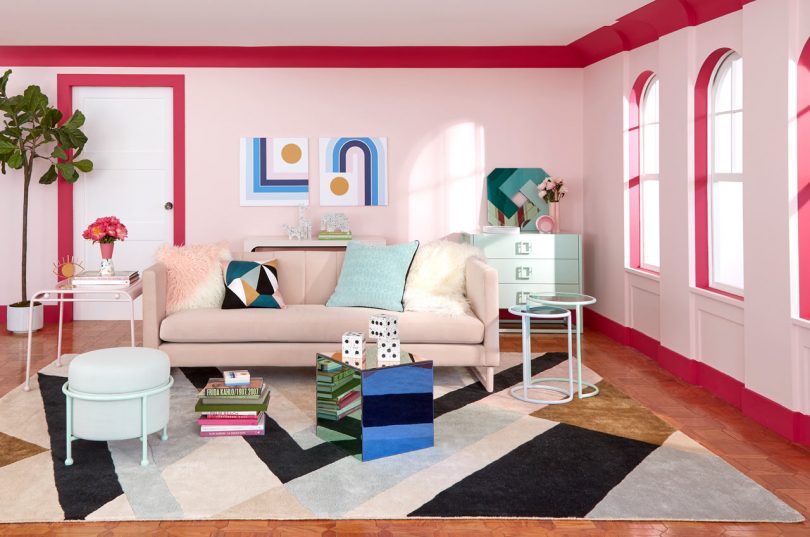Allie Weiss has covered the professional design industry and reported on some of the country’s most impressive modern homes for Interior Design and Dwell.
Two glassblowers are gracing visitors to the Corning Museum of Glass in Corning, New York, with a rare showing of their talents outside of Finland. An intimate group has gathered to watch the duo make Birds by Toikka, a collection of glass creatures manufactured by Iittala that has become a staple in Finnish homes and a prized object around the world. For four days, the workers blow, shape, stretch, and color glass into different species; the spectators watch a blue bird, a stork, a duck, and more emerge after only about 15 minutes of finesse in the gaffers’ hands.

Once the glassblowers inflate the glass, it returns to the furnace before it can continue to be shaped. The birds are free-blown, which means that molds aren’t used to make them. \\\ Photo: The Corning Museum of Glass.
Back at the Iittala factory in Hämeenlinna, Finland, glassblowers Helena Welling and Juha Saarikko usually work on only one bird species at a time. But for this special annual showcase at the museum, the duo makes a large selection of birds, highlighting both their wide-ranging skills and the beautiful variety in the collection.

More molten glass is added to make components like the head, neck, and tail. The workers use simple steel tools, the same ones that have been used since the beginning of Toikka’s collection, to pinch off the glass from the pipe. \\\ Photo: The Corning Museum of Glass.
The beloved line is the brainchild of Oiva Toikka, a legendary Finnish glass designer who produced his first flycatcher in 1972. The collection ended up growing at a spectacular rate, and Toikka has dreamed up more than 500 birds over the decades. “At first, only a small group of people were interested in the birds, but little by little people have discovered them and they have become a hugely popular collector’s item,” says Iittala’s Lotta Hurttila.

Toikka designed the birds so that no cutting or after treatment is needed. \\\ Photo: The Corning Museum of Glass.
And Toikka, at age 87, continues to leave his mark. Twenty-five birds are currently in production, and new designs are added each year. When Toikka comes to the factory in Finland, he is a warm presence. “He remembers somebody’s kids and asks how they are,” says glassblower Juha Saarikko, who has worked at Iittala for 13 years. “He’s very friendly and down-to-earth.”

Helena Welling and Juha Saarikko, who have both worked at the Iittala factory in Finland for over a decade, demonstrate the production process for an annual event at the Corning Museum of Glass. \\\ Photo: The Corning Museum of Glass.
“He’s really thinking about the workers, and that’s why he continues to make the birds,” adds Helena Welling, who has produced this collection for 11 years. “He wants us to have jobs and a future.”
At the workshop in Corning, where the birds are in the museum’s collection, Saarikko and Welling engage in an act that requires grace, precision, and artistry. Each glassblower takes turns leading the process, moving back and forth from the furnace to the bench as they gradually shape the basic form of the creature. The workers inflate the molten glass with their own air and then fine-tune the body as quickly as they can before it hardens. They rely on the same tools that were used back in the 1970’s, including steel tweezers and layers of newspaper that allow them to manipulate the glass by hand without touching the piece directly.
As one worker brings the bird to life, their partner helps out by adding small amounts of glass that become the bird’s neck, head, or tail. This process is all about timing, and perfect harmony between glassblowers is needed in these moments. Amazingly, Saarikko and Welling pull this off with not much more than a few whispers of coordination. “Usually the people that come to the factory are amazed, because we may not talk to each other,” Welling jokes.
Their expertise results in charming, colorful creations that inject a sense of personality into the home. “The birds demonstrate the outstanding skills of the glassblowers and the intense co-operation of blowers, designers, and artists,” Hurttila says. “They also represent the strong craftsmanship tradition and color competence we have and want to keep alive in Iittala.”
Nearly five decades after their introduction, the birds seem very much alive at the hot shop in Corning. Saarikko points out that he had not even been born when some of the styles he makes were first produced. With long careers ahead of them, this generation of Toikka experts will surely help shepherd the birds’ legacy into another chapter.

The gaffers add color by rolling the birds in powder made of grinded glass. But the actual color of the birds can’t be seen until they cool completely. \\\ Photo: The Corning Museum of Glass.

“Collaborations like this allow us to partner with brands, designers, and artists to develop and sell products that have current relevance and highlight the skill sets that the makers and de-signers have,” says Meghan D Bunnell, buyer at the Corning Museum of Glass. This bird features an opaline white hue created specifically for the event this year. \\\ Photo: The Corning Museum of Glass.
from Design MilkArt – Design Milk https://ift.tt/2StVSZs















































